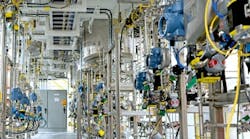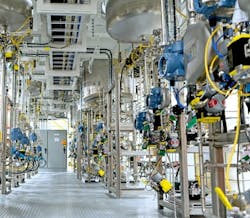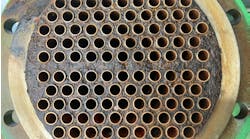Asset Management: Get the Most Pilot Plant for Your Money
Pilot plants are inherently expensive and time consuming. So, organizations always are looking for ways to save money on pilot plant projects and speed them up. Here are some of the best ways to make your next pilot plant the most efficient, effective, fastest and least costly.
1. Define your program goals in adequate detail before starting. Spell out your objectives for the unit and prioritize them. Document the objectives clearly and review the document with all interested parties to ensure everyone is aligned. Determine the priorities among the goals because tradeoffs often will be necessary. Is lowering costs at the expense of a longer schedule acceptable, or is speed worth extra spending? Is higher accuracy of data worth the greater costs and effort versus accepting a slightly lower accuracy? When everyone isn’t aligned, people tend to push the designer in competing directions — needlessly complicating the design and increasing the potential for rework later in the design process. Documenting the goals also ensures none are missed and that a relatively minor one doesn’t receive undue emphasis. It also sends a clear message to all parties, including management, about what they can — and cannot — expect from the pilot plant, thereby eliminating the potential for unwarranted expectations. This process won’t be fast or easy. However, it’s an often-overlooked but critical step.
[callToAction ]
2. Look carefully at all alternatives to new construction. New construction always is costliest and takes the most time. Options commonly available include repurposing an existing unit, modifying an existing unit, relocating a unit from another location, or contracting out elements of the program to universities or outside research organizations. For example, a local college or testing laboratory readily might provide data on physical properties and kinetics. Also recognize the objectives may result in conflicting demands (e.g., high accuracy but fast turnarounds). Hence trying to achieve these conflicting goals by other methods or even in two units might be a better choice. Realize, too, that such options, even if available, may not actually save money or time or be the right answer. Nevertheless, it’s always sensible to put some effort into ensuring that nothing potentially advantageous is overlooked. Recognize, however, that new construction maximizes your ability to customize the pilot plant to do exactly what you want. Almost any other alternative will require some compromises.
Figure 1. Because pilot plants usually are well instrumented, inadequate attention to calibration needs can markedly hamper startup. Photo courtesy of EPIC Process Systems.
3. Identify all key issues and requirements needed to meet the program objectives. Make sure the pilot plant design addresses all these critical requirements. Separating needs from wants never is easy but is critical for reducing cost and schedule. Review the final design for elements that don’t contribute to meeting these key requirements and consider eliminating them to simplify the design and operation and thus reduce costs and schedule. Consider a cold eyes review to help in the identification. People differ in their own views of the most critical requirements. This step forces a discussion that hopefully should lead to a consensus on what are the most critical items. Most pilot plants accumulate a large number of “requirements” that analysis shows really aren’t essential. Their elimination or at least reduction saves considerable costs and schedule time as well as simplifies the design.
4. Make a preliminary or scoping estimate and schedule early. This should identify if there’s a gross mismatch between expectations and resources. If so, then secure additional resources (budget, schedule, people, etc.) or cancel the unit. Don’t waste limited resources on a program that can’t be funded. Ensure the estimate and schedule are realistic and don’t just reflect an inspired guess or wishful thinking. Developing a realistic scoping estimate is difficult and requires significant pilot-plant and cost-estimating experience; verify the person making the estimate is qualified to do this demanding work.
This step often is bypassed if there appears to be a mismatch in the hope the detailed design will result in a much-less-expensive unit (and a manageable mismatch). My experience is that this hope rarely is fulfilled. So, needless effort usually goes into redesigning the unit once the “official” cost estimate is made to force a match between budgets and desires. This effort often results in rushed designs, failure to understand the consequences of changes, and a poorly performing pilot plant.
5. Develop a detailed design basis for the proposed unit and circulate it to all interested parties. This step serves as a valuable check that the design basis addresses all the key requirements and all the parties’ concerns — but also risks reopening previous discussions as to goals and requirements. Cutting off such exchanges early is crucial to avoid senseless rework. However, different views and concerns that do need addressing before the design starts likely will surface. This step also forces everyone to reach agreement on numerous small points early, avoiding rework later. In addition, it’s useful in identifying any needs that have been missed and any noncritical desires that have crept into the design.
The detailed design basis will take time and effort to develop and, again, to review. Make sure everyone does review it or unnecessary problems will arise later. Establish a formal review and approval process for prospective changes that subsequently come up.
6. Strive to get the most experienced pilot-plant designer available. That person usually will be faster and produce a better design, and also will be better able to identify and address potential problem areas. In addition, a seasoned designer more likely will challenge preconceived ideas and suggest cheaper or faster alternatives. Experienced pilot-plant engineers are rare and often difficult to engage due to cost or other commitments — but it’s still worth putting in the extra effort to try to find one.
7. Arrange for a cold eyes review of the proposed design by an experienced pilot-plant designer. The less experienced the primary designer is, the more important this becomes. A cold eyes review allows a broader view of the final proposed design before too much is committed. It also can identify weak areas in the design, riskier approaches or blind spots. If not identified and corrected, these always will create problems later. Make sure this review occurs late enough in the design so all details can be checked. However, leave enough time for properly conducting it and addressing any uncovered issues before work starts.
8. Evaluate the design for potential problems and develop fallback positions. You should include elements or develop plans for what to do if the primary design doesn’t work as expected. For example, adding a sight glass can enable confirming proper operation of a level instrument; providing extra space and power can allow installation of a larger pump if required. These fallback positions often make the difference between a good design and a poor one. The decision to pre-invest in any of these fallbacks always is difficult. However, having a plan lets you more critically evaluate if the extra expenditures now are worth the potential savings later if something goes wrong. Many will turn out to be relatively inexpensive and worth doing.
Figure 2. Fabrication in a shop instead of in the field usually provides equipment faster and at lower cost. Photo courtesy of EPIC Process Systems.
9. Perform a detailed review of the design for startup problems. This simple step often can identify many potential issues, so you can modify the design to avoid them and thus save significant time and effort later. The list of overlooked startup problems is extensive but some typical examples include:
• How can the instrument be calibrated? Does it demand special training or tools? A pilot plant usually has loads of instrumentation (Figure 1), so, ignoring such issues may severely slow startup.
• How can the new level probe be set? Does it need a sight glass or an added port at the high and low levels?
• How do you fill the micro-flow feed line the first time?
Develop a detailed startup plan that lists all the necessary steps in adequate detail to enable identifying the resources required and estimated duration. This avoids the common practice of guessing what will be needed and how long a job will take — both are recipes for disaster. Such a plan always helps both to manage expectations and allow the commissioning process to go faster and more efficiently.
10. Perform a detailed hazard analysis and risk assessment of the final design before locking it down. This helps ensure no outstanding safety issues will arise to increase costs and slow construction. Don’t wait until after approval to do the review because such a delay may add costly or more-time-consuming requirements. Often, failure to perform this review results in significant cost overruns or lifelong safety issues.
11. Consider all possible options for the most efficient way to construct the unit. Should you do it in-house or use a contractor? Should you seek vendor help for some custom components that it can fabricate faster or better? Can you construct the unit in a shop and then move it to its final location for installation? Shop construction almost always is faster and less expensive then field construction. Building the unit in a shop as a group of modules and shipping them to the final location for installation (Figure 2) and assembly in nearly all cases is a lower cost option. Be careful to evaluate all the hidden costs for working in the field: e.g., the time to get to and from the job site, the time waiting for permits, the time lost walking to stockrooms, lunch and rest rooms, etc.
12. Develop a realistic final cost estimate and schedule for the unit. This often will differ from the preliminary estimate, particularly if the original estimator is inexperienced in pilot plants or the design has been forced to evolve in directions different from those envisioned at the time of the first estimate. It allows a final review as to whether or not the unit should progress or if the program, design or schedule needs modification to accommodate more limited funding. Realizing you have a budget gap at this point certainly isn’t ideal but is far better than recognizing the issue at a later stage.
Following these pointers will help you succeed with your next pilot plant. You can find more guidance in the listed references.
RICHARD PALLUZI is principal of Richard P Palluzi LLC, Basking Ridge, N.J., and serves as pilot plants guru for CP’s online Ask the Experts Forum, www.chemicalprocessing.com/experts/pilot-plants/. Email him at [email protected].
REFERENCES
Palluzi, R. P., “Research Projects: The Importance of ‘Cold Eyes’ Project Reviews,” Chem. Eng. (Feb. 2017).
Palluzi, R. P., “Developing Screening Estimates,” Chem. Eng. Prog. (July 2011).
Palluzi, R. P., “Consider Modular Pilot Plant Construction,” Chem. Proc. (Feb. 2010).
Palluzi, R. P., “But What Will It Cost? The Keys to Success in Pilot Plant Cost Estimating,” Chem. Eng. (Nov. 2005, Dec. 2005 and Jan. 2006).
Palluzi, R. P., “Cost Effective Pilot Plant Design and Construction,” Chem. Eng. (Apr. 2000).
Palluzi, R. P., “Succeed at Crash Pilot Plant Construction,” Chem. Eng. Prog. (Dec. 1997).
Palluzi, R.P., “Pilot Plants: Design, Construction and Operation,” McGraw-Hill, New York City (1992).




